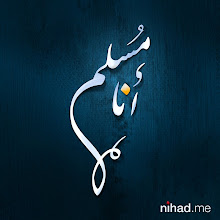Ashmun Temple
The Ashmoun religious complex of the most important archaeological and religious communities in Lebanon and is located just one kilometer from the city of Sidon, and has held this religious complex in honor of the Lord healing Phoenician "Ashmoun" and still differs from other Phoenician sites in Lebanon being had kept more than a stone foundations. Work which began at the end of the seventh century BC and continued to receive care through the following centuries, it has added to parts of it and rebuilt the other parts, so that the sections belonging to the Phoenician era is almost lost among the later ages installations, from the Romanian way of arcades to cobble mosaic floors to Roman luxurious way to the foundations of the Byzantine church, and all signs indicate the status of the prestigious site in the eyes of the subjects despite differences in religious attitudes and history .... Ashmoun back to that young man out of Perotti and his favorite hobby was fishing. In a few days the goddess "Astarte," and signed in love, but what was it about that money seduce her, LFGB himself and died. When they did not give up the goddess of fate, brought her boyfriend to Mspegh him life divinity properties ... It is also said that the town "Tomb Hmon" located close to Beirut still retains to this day the anniversary of the burial of God the young man and has been "Ashmoun" originally Allagha to heal , but the story of his death and resurrection made him Allagha fertility cosmic Allagha of greenery that die every year and come back to life after.
As the god of healing, merged personal "Ashmoun" the character of the Phoenician god of Greek medicine Roman "Asclepius". Whereas the latter a close relationship snakes that were raised in his temples and play a role in the healing of certain diseases, it has used the snake wrapped code on the stick as a symbol of the art of medicine was found close to the Temple "Ashmoun" on a sheet of gold engraved with a picture of "Ashmoun" Lord healing, holding a stick in his hand wraps around the snake, and to his image, "IGA" goddess of health. Also found on a Beirut coins from the Roman era represented by standing between the snake ... As for the archaeological excavations Throughout the centuries, the temple site was "Ashmoun" as extracted from the quarry stones Mqsobh pleases him ready for use ... In 1900 the Turkish archaeological mission discovered number of Phoenician inscriptions in the temple, which was not specified identity after site. After twenty years digging at the site a number of Alasbarat Limited and managed exploration work that followed in 1925-1926 close to the riverbed of detecting ground paved with mosaic dating back to Roman times and a number of marble statues that represent the children, the sick and return to Almtagriq age "the end of the fourth century even the first century BC). it also found that long to write another Phoenician bearing the name "Ashmoun" and a few kilometers from the site were found on a set of scripts that carry the Phoenician King "Abdul Astrt" name, which had been numbered in those days on the occasion of the establishment of a major network to convey water to the temple ..... As for places that can be visited are the remnants of the great temple stairs and Roman mosaics and paved the way Romania celebration of corridors and Almamodh Kmalk there are the remnants of a hierarchical structure, but did not keep them, walls and stairs there is also a terrace Alamairia and which form part of a slave who raised "Ashmoun motif" and in addition to the great temple there is another temple was added to the complex in the third century BC, leaving nothing but a frieze dug him ritualistic scenes and scenes of hunting and the other representing the children having fun . And close to the corner of the North West remnants of the temple shrine dedicated to the goddess "Astarte," returns to the same period Almtagriqh as well as in the vicinity of the place paved with mosaic hall is guarded by two lions winged others, break their heads, have been added to the complex in 335 AD.

No comments:
Post a Comment